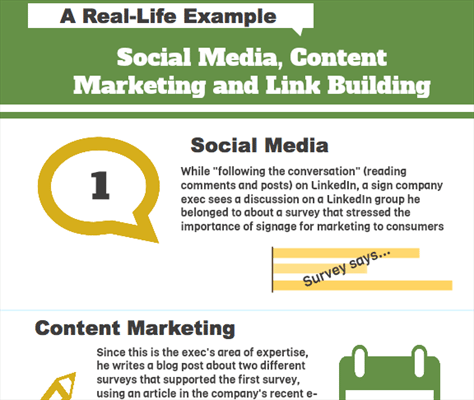Quick Tip Tuesday: 8 Tips for the DIY Search Advertiser, Part 1

TIP LEVEL: Intermediate
Running your own PPC campaign is hard. Even if you have a clear understanding of how keywords, ad groups, campaigns and landing pages all work together, finding the best campaign structure, keywords, ad groups and landing pages can be a full time job. But, it’s not impossible. Google AdWords and Bing Ad Center are set up to be self-serve and intended for the layperson, so if you are tempted by the apparent simplicity of PPC, here are some tips to help you take your campaign to the next level.
How’s your campaign doing?
Review your campaign regularly. We don’t mean several times a day (although that couldn’t hurt!), but at least once a week.
Monitor your website traffic. If your ads bring relevant, converting traffic to your website, then you know your campaign is doing well. But depending on your budget or the volume of traffic for your business, it may take a while to start seeing that traffic and feedback.
Monitor QS and CTR. In the meantime, there are two numbers you’ll want to keep your eye on.
- Quality score (QS) is a fairly complicated, keyword-centered measurement of how well your ads, keywords and landing pages work together. “Having a high Quality Score means that [Google’s] systems think your ad and landing page are relevant and useful to someone looking at your ad.”* Google provides individual keyword QS in the Keyword tab. On a scale of 1 – 10, with 1 being low. (If you don’t see the keyword Qual. score column, in the Keyword data table, go to Columns, Customize columns, Attributes, Qual. score to add it.) Raising individual keyword quality scores takes time and constant attention, as until you have enough impressions in your own campaign, QS is based on the word’s historic performance on Google.com.
- Clickthrough rate (CTR) is a simpler indication of how your campaign is doing. You can look at this for Campaigns, Ad Groups and Ads. If you see a CTR over 1%-3%, then you’re on the right track. Anything below that means you’ve got some work to do (see “manage your keywords” below).
Manage your keywords for better performing campaigns.
Pause non-performing keywords. Keywords with no clicks, or low clicks (check the CTR) should first be paused so they don’t affect your campaign. Once you’ve paused them, you can try to research why they are not performing and then take action. Among the many reasons are the fact that they’re in the wrong ad group (create a new ad group for that keyword and its associated words) or not relevant to your landing page (update your landing page or direct that keyword to a more relevant page).
EXTRA: What about keywords with low search volume? You do not have to pause keywords with a “low search volume” status. It turns out that low search volume keywords won’t have any impact on your quality scores – they’re really just an indication that at the time, your ad may see a very low number of impressions. But having “low search volume” keywords won’t have any other negative impact on your account.
Use Keyword Match types. It’s fine to use broad match, but including exact and phrase match for just about every keyword ensures a balanced mix of traffic from the highly targeted to very broad.
Always include Negative keywords. By choosing negative search terms that are similar to your keywords but that indicate that people are looking for a different product or service, you’ll reduce your costs by eliminating irrelevant clicks and also help maintain that all-important Quality Score. For example, if your business sells signs, adding “sign in” as a Negative keyword will prevent your ad from showing to people looking for “how to sign in to Facebook” or some other website.
Use the Keyword Details feature regularly. Find out exactly which terms triggered your ads. Go to Keywords > Details > Search Terms > All. See some that are generating clicks? Use the “Add as a Keyword” option to include these words in your campaign. Conversely, if you find terms that are generating clicks but that are not relevant to your business, use the “Add as a Negative Keyword” option.
Create ads that people will click on.
Write ads that set your business apart on landing pages. Relevance is PPC 101 – keywords organized by relevant ad groups with those keywords appearing in ads and need to consider the human part of the equation, and make your ads stand out from all the others.
Take a quick review of your competitors’ ads – do they mention a price, sale or discount? A delivery method? While you might want to consider including similar information, be sure to write text that sets your ads apart. Here’s a great place to use your competitive differentiator (your guarantee, your free shipping, etc.). Also be sure to have a strong call to action – what do you want the visitors to do once they see your ad?
EXTRAS:
- Always create a mobile version of each ad. Create a copy of your ad and on the edit screen select Mobile. You’ll even see a preview of how it will look on a Smartphone.
- Save a space for a period. For a nicer looking Top ad, put a period at the end of the first line of text. This trick combines the ad title and first line of text with a hyphen when your ad is displayed in the Top. For example:
This post is the first of several in which we share what we’ve learned from years of managing AdWords accounts. Stay tuned for Site extensions, A/B testing, Low-performing keywords, Conversion tracking, Manual bidding and more.
Sales Renewal’s insight:
Running your own PPC campaign is hard. Even if you have a clear picture in your mind of how keywords, ad groups, campaigns and landing pages all work together, finding the best campaign structure, keywords, ad groups and landing pages can be a full time job. But, it’s not impossible. Google AdWords and Bing Ad Center are set up to be self-serve and intended for the layperson, so if you are tempted by the apparent simplicity of PPC, here are some tips to help you take your campaign to the next level.






